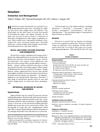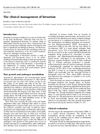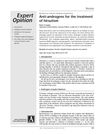Treatment of Hirsutism with a Gonadotropin-Releasing Hormone Agonist (Nafarelin)
TLDR Nafarelin may effectively treat excessive hair growth in women by reducing certain hormone levels.
In a study conducted 37 years ago, six women with hirsutism were treated with a gonadotropin-releasing hormone agonist, nafarelin, at a dose of 1000 µg/day for 6 months. The treatment led to a significant decrease in serum gonadotropin, testosterone, free testosterone, and androstenedione concentrations. Specifically, luteinizing hormone (LH) levels decreased from 17.9 ± 4.6 to 5.0 ± 0.5 mlU/ml, follicle-stimulating hormone (FSH) from 9.3 ± 0.7 to 7.2 ± 0.9 mlU/ml, total testosterone from 0.77 ± 0.10 to 0.40 ± 0.14 ng/ml, free testosterone from 10.7 ± 2.7 to 4.1 ± 1.6 pg/ml, and androstenedione from 2.4 ± 0.4 to 1.2 ± 0.2 ng/ml, all showing significant reductions. The clinical response was positive, with slower hair growth and less coarse new hair. Hirsutism scores improved in four out of the six patients, with the mean score significantly decreasing from 19.3 ± 3.3 to 13.2 ± 2.8. These results suggest that nafarelin, by suppressing ovarian androgen production, may be effective in treating hirsutism.



